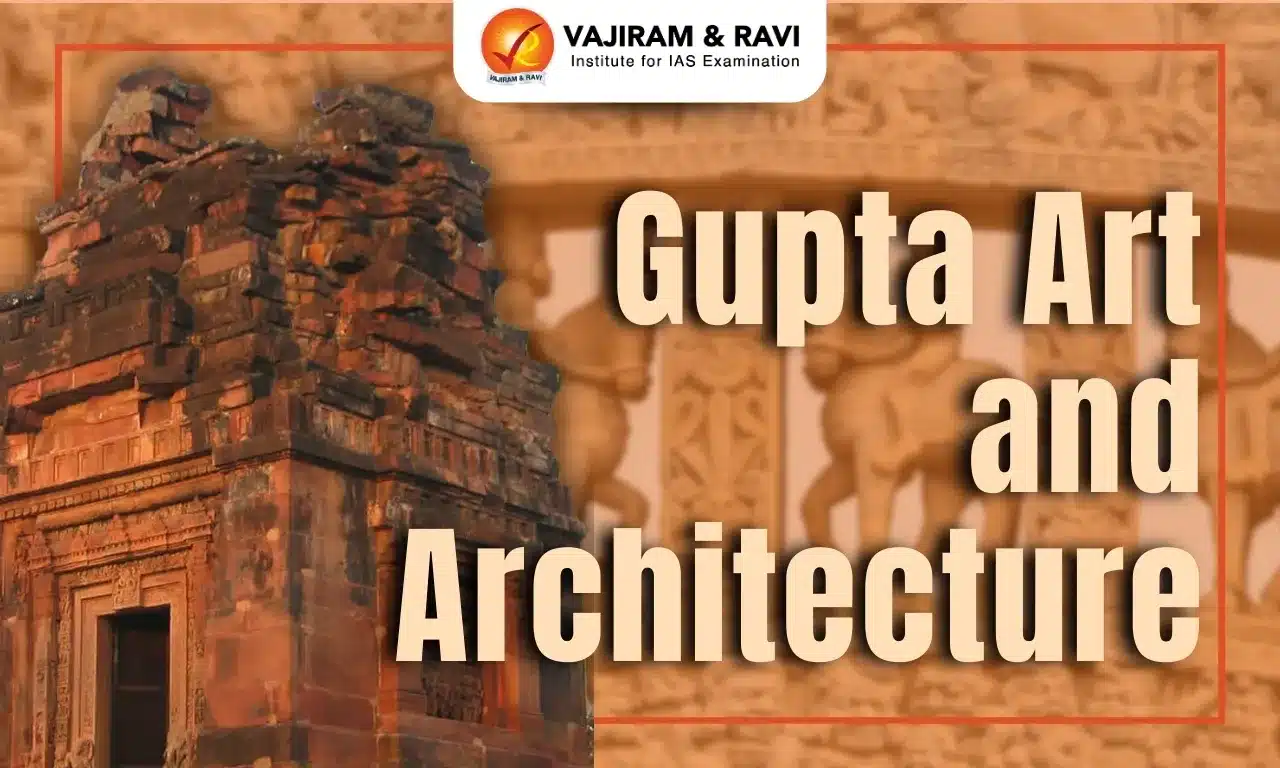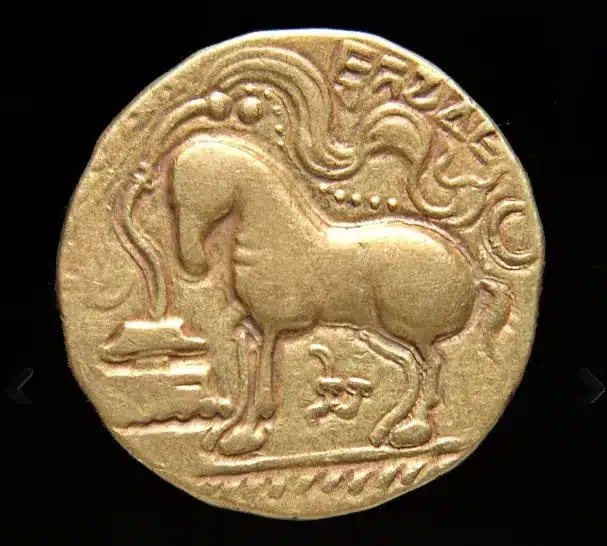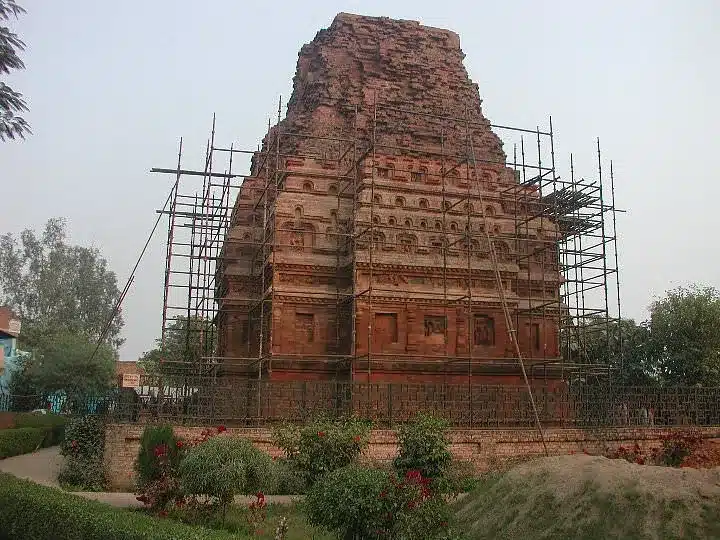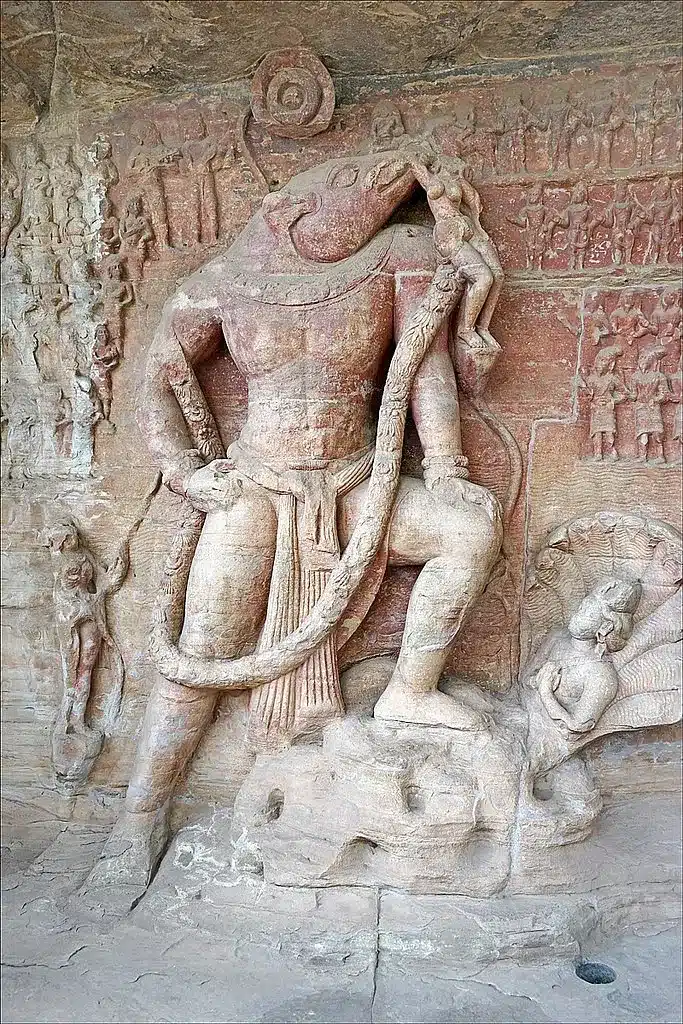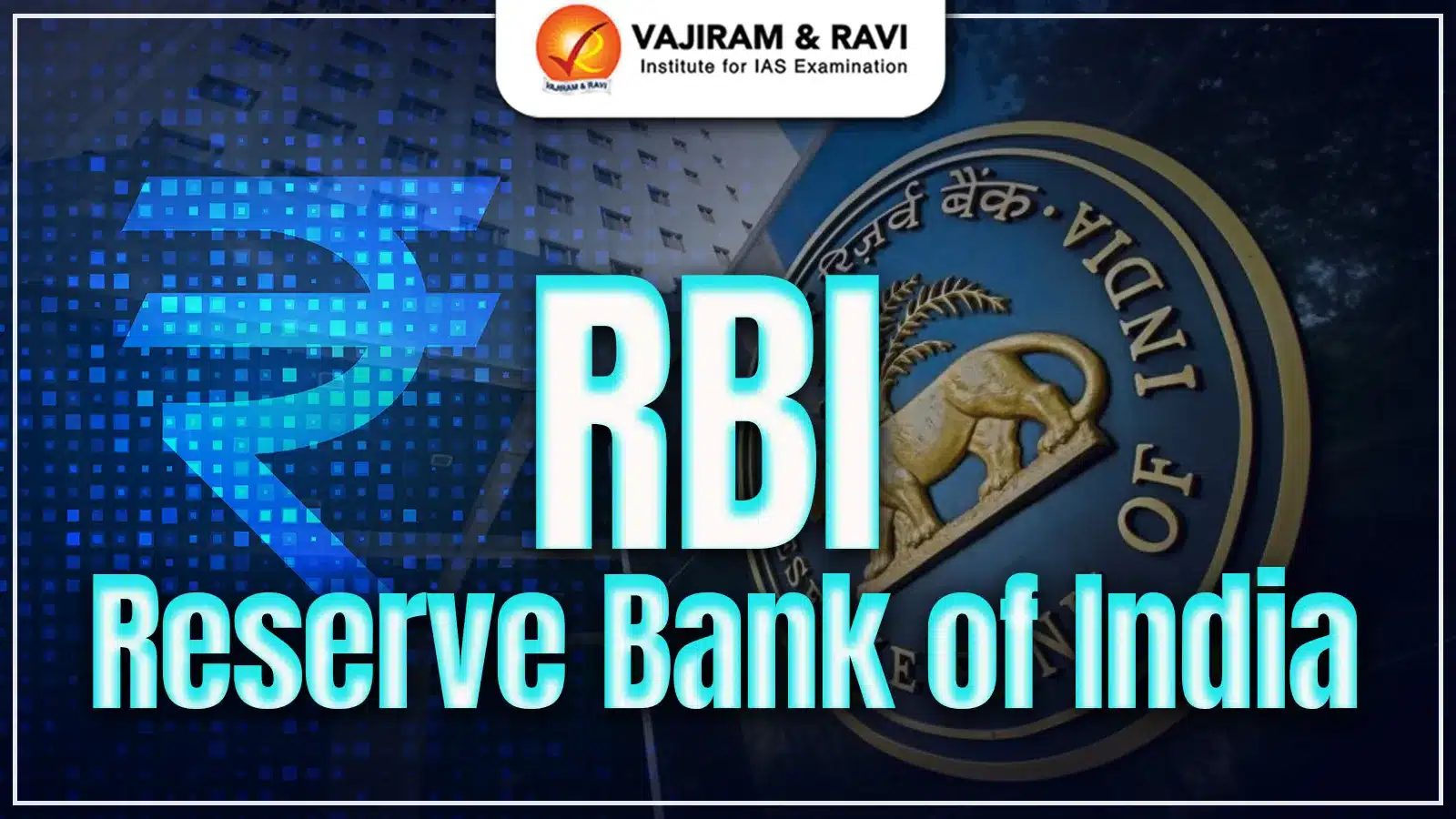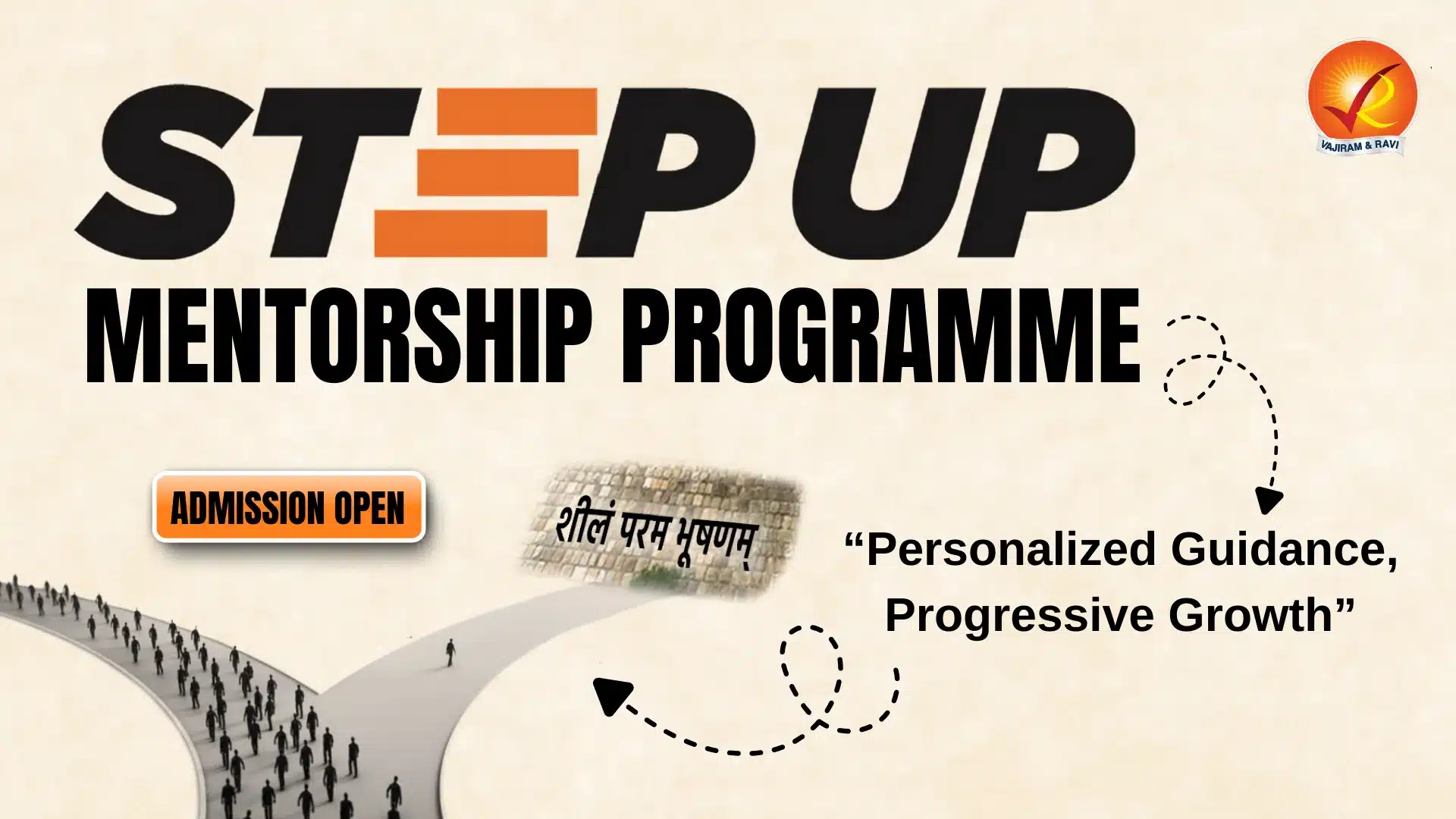Gupta Art and Architecture flourished during the Gupta Empire (320-550 CE), representing a classical peak in Indian artistic expression. Gupta sculpture dominated this period, with Mathura and Sarnath emerging as key centres, producing iconic Hindu deities, Buddha figures, and Jain Tirthankaras. Gupta sculpture, influenced by Greco-Buddhist art from Gandhara, is noted for its grace and elegance, embodying a "Classical decorum."
Additionally, the Gupta era laid the foundation for Hindu temple architecture, as seen in the Dashavatara Temple at Deogarh. However, this period saw a decline in rock-cut architecture, with construction halting until the late 5th century. Monuments such as the Ajanta, Elephanta, and Ellora caves reflect the monumentality and aesthetic balance of the Gupta style.
Gupta Art and Architecture Gupta Empire
Gupta Empire (320-550 CE), founded by Sri Gupta, is celebrated as the Golden Age of India due to its advancements in art, literature, science, and education. Rulers like Samudragupta and Chandragupta II expanded the empire, fostering cultural achievements. Scholars such as Kalidasa and Aryabhatta rose to prominence, while Nalanda University became a major centre for learning.
- Gupta's administration was highly organized, with a thriving economy based on agriculture and trade. Religious tolerance was prevalent, with Hinduism, Buddhism, and Jainism coexisting.
- However, by the late 5th century, the empire faced a decline due to Huna invasions, internal conflicts, and economic challenges.
Gupta Art and Architecture Art
Gupta Age was notable for the tremendous progress achieved in the field of art. The artistic and cultural progress achieved during the Gupta rule can be called the culmination of Indian intellectual activities. The prime contribution of this age lies in the development of perfect images belonging to both Brahmanical and Buddhist religions.
Gupta Art Paintings
Gupta art paintings are a hallmark of ancient Indian history, celebrated for their unmatched glory, intricate beauty, and religious themes. These artworks are renowned for their exceptional naturalism, graceful compositions, and idealized human forms. Gupta paintings often depict serene figures with calm expressions, reflecting a divine and tranquil atmosphere that captivates art enthusiasts worldwide.
- Ajanta Cave Paintings: Found primarily in the Ajanta Caves, these artworks showcase the artists' technical skill in fresco painting, employing vivid colours, delicate shading, and fine lines to illustrate scenes from Buddhist Jataka tales.
- Further, Ajanta paintings, characterized by their lifelike quality and brilliance of colours, depict significant events in the life of Buddha and reflect the sophistication of Gupta art.
- The Bagh Caves and Sigiriya in Sri Lanka also display the impact of the Ajanta style, a further testament to the enduring legacy of Gupta paintings.
Gupta Art Sculptures
Gupta sculptures are known for their distinct styles, primarily emerging from centres like Mathura, Varanasi/Sarnath, and Nalanda. Characterized by large figures of deities such as Buddha, Vishnu, and Shiva, these sculptures reflect the dynasty's strong preference for Vishnu.
Gupta Sculpture Classical Phase
Gupta period is recognized as the classical phase of Indian sculpture, where art techniques were perfected, and ideals of beauty were clearly defined. Artistic trends from Bharhut, Amaravati, Sanchi, and Mathura merged into a unified plastic tradition. Gupta sculpture derived its plasticity from Mathura and its elegance from Amaravati but belonged to a higher ideal with a closer harmony between art and thought.
- Mathura remained the primary art centre, with Sarnath and Kosambi also gaining prominence in the 5th and 6th centuries.
- The Udayagiri caves showcased early Hindu iconography, including Durga as Mahishasurmardini and the Saptamatrikas.
Gupta Temple Sculptures
Gupta temple sculptures are best represented by the large panel of Sheshashayi Vishnu from the temples at Deogarh (Uttar Pradesh) and the great Boar (Varaha) at the entrance of temples of Udayagiri (Madhya Pradesh) and Ajanta are excellent specimens of figure sculptures.
- At a Shiva temple in Ahichhatra (Uttar Pradesh), there are life-sized terracotta images of Ganga and Yamuna standing on Crocodile and the Tortoise, respectively, who are the attendants of Lord Shiva.
Gupta Sculptures Example
Gupta period produced remarkable stone and bronze Buddha sculptures found at sites like Nalanda, Mathura, Sarnath, Paharpur, Ajanta, and Nagarjunakonda. These works influenced art in Southeast Asia, Central Asia, and China, exemplifying refined craftsmanship, spiritual depth, and innovation. The following examples illustrate key features of Gupta Buddha sculptures:
- Buddha from Mathura: A 5th-century sandstone image with abhayamudra and intricate details in the halo and robe.
- Buddha from Sarnath: A standing Buddha showing a relaxed, refined posture with a slight body bend.
- Seated Buddha in Dharmachakrapravartana Mudra: A Chunar sandstone figure representing the turning of the Wheel of Law, reflecting artistic finesse.
Gupta Numismatic Art
Gupta coins were thoroughly indigenous in their art, motif, and execution and lacked any foreign influence. In terms of their artistic merit, purity, diversity, and originality, the gold coinage of the Imperial Guptas hardly has any equal to the coinage of India.
- Artistic Quality: Gupta coins are renowned for their high relief, intricate details, and exceptional craftsmanship. They often featured lifelike depictions of rulers, deities, and symbolic motifs.
- For example, Samudragupta's coins depict him performing the Ashvamedha Yajna with meticulous detail.
- Epigraphy: The coins often featured inscriptions in Sanskrit using the Brahmi script, reflecting the Gupta rulers’ promotion of Sanskrit as a cultural and linguistic medium.
- For example, Kumaragupta I's coins bear the inscription “Shri Mahendraditya,” marking a cultural shift from the earlier use of Prakrit.
- Diversity in Coinage: Gupta coinage displayed a wide range of types, each representing different aspects of the ruler's identity or accomplishments.
- For example, Chandragupta I's “Tiger-Slayer” coin symbolizes his valour by depicting him slaying a tiger, a theme unique to the Gupta era.
- Metallurgical Excellence: Gupta coins were made from high-quality gold, silver, and copper, with a particular focus on purity and weight. This reflected the economic prosperity and stability of the Gupta Empire, as seen in their gold dinaras.
- Religious Symbolism: Gupta coins frequently represented gods like Vishnu, Lakshmi, and Ganga, alongside rulers in divine or heroic poses. These depictions not only served as religious symbols but also emphasized the rulers' divine authority.
- For example, Chandragupta II's gold coins, which portray him as a bow-wielding warrior, with Lakshmi seated on a lotus on the reverse.
Gupta Art and Architecture Architecture
Gupta period was the phase of Brahmanical resurgence. The Gupta kings were very interested in building temples and installing images of their favourite gods (ishta-deva) therein.
Gupta Temple Architecture
The spread of Bhakti ideology and the increased importance given to image worship resulted in the building of several free-standing temples. The Gupta age marks the formative phase of temple construction in India.
- Gupta temples represent an evolution from the earlier rock-cut shrines. The temples were made of stone or brick.
- Early Gupta Temples: Gupta era reflects remarkable creativity and a deep appreciation for beauty, particularly evident in the design of Gupta temples. Initially, these temples featured small structures with central shrines, designed with roofs that had spouts for effective drainage of water.
- Shape and layout: These early temples typically consisted of a square chamber accompanied by a columned portico or verandah in front, establishing a foundational layout that influenced the design of temples in the later Gupta and post-Gupta periods.
- Temple No. 17: One of the earliest extant Gupta temples is Temple No. 17 near the chaitya hall at Sanchi.
- Notable examples include the Dashavatara Temple at Deogarh, the Bhitargaon Temple near Kanpur, the Parvati Temple at Nachna-Kuthara in the Panna district, and the Temple at Bhitari in Ghazipur district.
- Later Gupta Temples: Later Gupta temples, such as the Deogarh temple dedicated to Vishnu, feature a square chamber that houses the image of the primary deity.
-
- Each of the four corners has subsidiary shrines that encase secondary deities, making it one of the earliest examples of the Panchayatana style.
- Relief: The Deogarh temple is also notable for its ornate sculptural reliefs, including the Nara-Naranaya relief, the Gajendramoksha relief, and the "Vishnu on Shesha" relief.
- Shikhara: Additionally, the elaborately carved shikhara seen in this temple are further reflected in the brick temple at Bhitargaon.
Gupta Cave and Buddhist Architecture
Alongside the erection of temples, cave architecture was also in vogue. This was because Buddhism was also followed widely in this period, even though Gupta rulers were patrons of Hinduism. In this sense, the rule of the Guptas was secular as seen in the establishment of Nalanda University by Kumaragupta.
- Cave temple at Udayagiri, Vidisha (MP): The carvings found here are the earliest intact body of Hindu art in India. They constitute evidence of the fact that many Hindu iconographic ideas were already well established by the early 5th century CE.
- Evidence of magnificent Stupas, Chaityas and Viharas of the Gupta period are found at the Buddhist sites of- Sarnath (UP), Nalanda (Bihar), Rajgir (Nalanda district, Bihar), etc.
- The Dhamekh stupa at Sarnath is spectacular due to its variety of geometric patterns and artistic designs.
- The earliest brick structure of the Buddhist University at Nalanda founded by Kumaragupta-I belongs to this era.
- Buddhist chaityas, cave structures in western Maharashtra, and monasteries at Kanheri, Bhaja, Junnar, Bedsa, and Mahar (all in Maharashtra) were commissioned by the aristocracy and affluent guilds, merchants, and artisans.
- The Mani-naga Jaina temple at Rajgir is also notable from this period.
Gupta Art and Architecture Literature
Gupta period is remarkable for the production of secular literature, which consisted of a fair degree of ornate court poetry. This period also shows an increase in the production of religious literature. The Greatest Indian Sanskrit poets, dramatists, grammarians, playwrights, and science scholars are known from the Gupta period.
Major Literary Contributions of the Gupta Period
The Gupta period (4th to 6th century CE) is considered a golden age for Sanskrit literature, with Sanskrit becoming the official language of the Gupta court and spreading among Buddhist and Jain scholars. During this time, Classical Sanskrit emerged from Prakrit, and the Nagari script evolved from Brahmi, solidifying Sanskrit's central role in Indian literature and intellectual life.
- Religious Texts: The 18 Maha Puranas, including the Vishnu Purana, Bhagavata Purana, and Matsya Purana, reached their final form during the Gupta period, contributing significantly to Hindu literature.
- Smritis, Shastras (law books), and Epics were composed, solidifying the intellectual foundation of the era.
- Epic Redaction: The great Indian epics, the Ramayana and Mahabharata, were redacted and finalized during the 4th-5th century CE, further enriching the cultural fabric of the period.
- Prayaga-Prashasti: Harishena, a prominent poet and scholar, composed the Prayaga-Prashasti (inscribed on the Mehrauli Iron Pillar) in honor of Samudragupta, demonstrating the integration of literature with royal patronage.
Renowned Literary Figures and Works
- Kalidasa (one of the nine jewels, or Navratnas, in the court of Chandragupta II) is considered one of the greatest poets in Indian history. His famous works include:
- Abhijnana Shakuntalam (a drama)
- Malavikagnimitram (a play)
- Vikramorvashiyam (a drama)
- Raghuvamsham (poem)
- Ritusamhaara (poem)
- Kumarasambhavam (epic)
- Meghadutam (poem)
- Bhasa, a pioneering poet of the early Gupta period, wrote 13 plays, contributing to the dramatic arts.
- Bhairavi, another important poet, authored Kiratarjuniyam, which is a key work in Sanskrit literature.
- Vishakhadatta is renowned for his work, Mudrarakshasa, a political drama that explores intrigue and strategy in the Mauryan court.
- Vatsyayana made a significant contribution with the Kamasutra, a treatise on love, relationships, and human behavior.
- Shudraka wrote the Mrichchhakatika, a play centered on the romantic story of a poor Brahmin trader and a beautiful courtesan.
Development of Sanskrit Grammar and Lexicography
The Gupta period also saw notable advancements in Sanskrit grammar and lexicography:
- Panini’s Sanskrit grammar, dating back to around the 6th-4th century BCE, was further developed and codified during this time.
- Patanjali, who lived in the 2nd century BCE, contributed to the interpretation and refinement of Panini's grammar.
- Amarsimha, a prominent lexicographer of the Gupta period, wrote the Amarakosha, one of the most important Sanskrit dictionaries, which remains widely used.
Gupta Age Science & Technology
Besides having great intellectual vigour, Indians of the Gupta age also possessed a scientific spirit of enquiry and pursued scientific subjects. Also, the rulers gave a great push to scientific studies. Apart from this, the period was also a major milestone in the evolution of Indian philosophical ideas and led to the development of six major schools of Indian philosophy.
- Mathematics: “Zero” and the evolution of the decimal system are credited to the path-breaking discoveries of the Gupta period. Brahmagupta, Aryabhatta, and Varahamihira were the earliest and foremost mathematicians and astronomers of the world.
- Astronomy: Varahamihira wrote Brihat Samhita which deals with astronomy, astrology, botany, natural history, and physical geography. His Panchasiddhantika throws light on five astronomical theories (siddhantas) that were in use during Varahamihira’s time.)
- His creations on horoscopy Laghu-Jataka and Brihaj-Jataka are widely consulted.
- Aryabhatta authored the Aryabhattiyam, covering mathematics and astronomy, and accurately explained solar and lunar eclipses in his Surya Siddhanta.
- He was the first to propose that the Earth revolves around the Sun, introduced sine functions, and developed the decimal place-value system.
- Medicine and Veterinary Science: The notable treatises on medicine include Charaka Samhita and Sushruta Samhita written by Charak and Sushruta.
- The Hastyayurveda written by Maharshi Palakapya is the first systematic treatise on veterinary science.
- Philosophical Schools: The following six schools/ systems of philosophies were well-developed including Nyaaya, Vaisheshika, Sankhya, Yoga, Mimamsa, and Vedanta.
Gupta Art and Architecture Influence on Later Indian Art
Gupta era innovations shaped Indian and Southeast Asian temple architecture. Elements like shikhara (tower) and mandapa (pillared hall) became defining features, influencing Nagara and Dravidian styles as seen in Khajuraho (India), Angkor Wat (Cambodia), and Borobudur (Indonesia).
- South India’s Chalukyas, Pallavas, Rashtrakutas, and Cholas and North India’s Pratihara and Chandela dynasties adopted Gupta architectural principles.
- This influence extended to Prambanan (Indonesia), My Son (Vietnam), and That Luang (Laos), while later Mughal, Rajput, and Southeast Asian art also reflected Gupta aesthetics.
Gupta Art and Architecture UPSC PYQs
Q1: With reference to the scholars/litterateurs of ancient India, consider the following statements: (UPSC Prelims 2020)
- Panini is associated with Pushyamitra
- Amarasimha is associated with Harshavardhana
- Kalidasa is associated with Chandra Gupta-II
Which of the statements given above is/are correct?
(a) 1 and 2 only
(b) 2 and 3 only
(c) 3 only
(d) 1, 2 and 3
Ans: (c)
Q2: With reference to the period of Gupta dynasty in ancient India, the towns Ghantasala, Kadura and Chaul were known as: (UPSC Prelims 2020)
(a) ports handling foreign trade
(b) capitals of powerful kingdoms
(c) places of exquisite stone art and architecture
(d) important of Buddhist pilgrimage centers
Ans: (a)
Q3: Discuss the main contributions of Gupta period and Chola period to Indian heritage and culture. (UPSC Mains 2022)
Q5: How do you justify the view that the level of excellence of the Gupta numismatic art is not at all noticeable in later times? (UPSC Mains 2017)
Last updated on November, 2025
→ Check out the latest UPSC Syllabus 2026 here.
→ Join Vajiram & Ravi’s Interview Guidance Programme for expert help to crack your final UPSC stage.
→ UPSC Mains Result 2025 is now out.
→ UPSC Notification 2026 is scheduled to be released on January 14, 2026.
→ UPSC Calendar 2026 is released on 15th May, 2025.
→ The UPSC Vacancy 2025 were released 1129, out of which 979 were for UPSC CSE and remaining 150 are for UPSC IFoS.
→ UPSC Prelims 2026 will be conducted on 24th May, 2026 & UPSC Mains 2026 will be conducted on 21st August 2026.
→ The UPSC Selection Process is of 3 stages-Prelims, Mains and Interview.
→ UPSC Result 2024 is released with latest UPSC Marksheet 2024. Check Now!
→ UPSC Prelims Result 2025 is out now for the CSE held on 25 May 2025.
→ UPSC Toppers List 2024 is released now. Shakti Dubey is UPSC AIR 1 2024 Topper.
→ UPSC Prelims Question Paper 2025 and Unofficial Prelims Answer Key 2025 are available now.
→ UPSC Mains Question Paper 2025 is out for Essay, GS 1, 2, 3 & GS 4.
→ UPSC Mains Indian Language Question Paper 2025 is now out.
→ UPSC Mains Optional Question Paper 2025 is now out.
→ Also check Best IAS Coaching in Delhi
Gupta Art and Architecture FAQs
Q1. What is Gupta art and architecture?+
Q2. What art is from the Gupta period?+
Q3. What is the famous Gupta sculpture?+
Q4. What are the two important places of the Gupta paintings?+
Q5. What is the golden age of architecture in India?+
Tags: gupta art and architecture quest UPSC Art and Culture Notes



